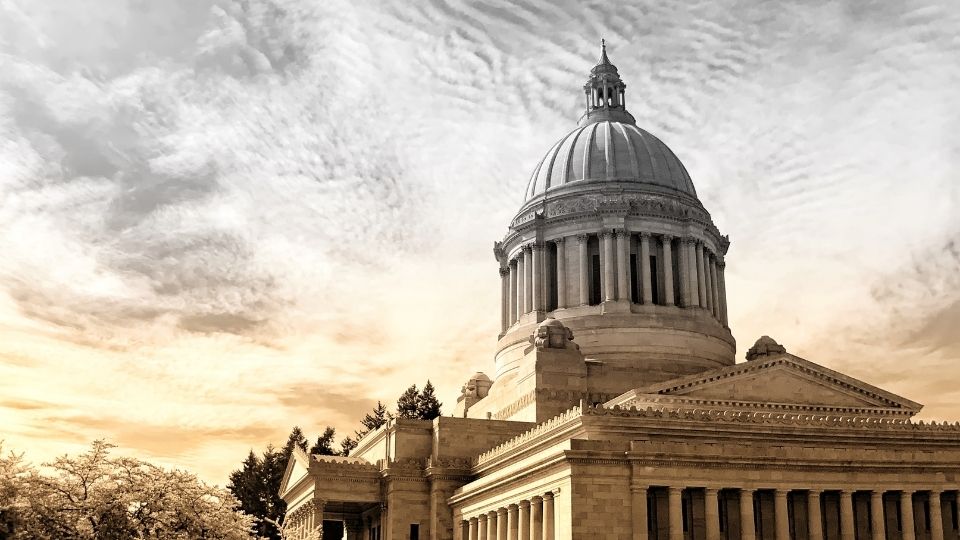Markets Confronting the Debt Ceiling
Investors experienced wild swings in September, something they have been unaccustomed to for most of 2021. The S&P 500 posted several days with declines of greater than 1%. It might have been worse if investors, flush with excess cash, had not placed buy orders in the final hours of trading on the most volatile days in an attempt to scoop up assets at a perceived discount. There are a variety of explanations for last month’s weak performance: confirmation that the Fed is planning to begin tapering its balance sheet soon, poor seasonality as September and October are generally the weakest performing months of the year, and an overbought market that needed a break. In addition, we suspect that the world returned to a bout of regularly scheduled uncertainty. With the President’s signature, bipartisan infrastructure deal and Build Back Better spending plan seemingly stalled, there is plenty of uncertainty to go around. Notably, raising the debt ceiling may be the most substantial source of risk and uncertainty.
What is the Debt Ceiling?
Imagine planting a sequoia seed in a two-inch pot. At first, the pot is perfectly sized for the undeveloped seed. The sapling quickly expands, however, requiring more space. Every few years, the roots threaten to break through the now undersized pot. The gardener continues to replant the sequoia in a slightly larger pot rather than somewhere it could responsibly grow without constraint. This illustration is a good analogy for how politicians treat the debt ceiling. The national debt is poised to expand over the foreseeable future, yet politicians are unwilling to agree to a sustainable solution. Instead, they kick the can down the road for the next Congress. This is not a partisan issue, with both republicans and democrats ostensibly willing to allow the debt ceiling issue to become a Congressional crisis each time.
Why is it a problem now?
In August, the Treasury began deploying “extraordinary measures” to manage its cash flows in order to keep the country’s principal and interest payments current. These maneuvers should buy the Treasury some time, but they can only go so far. They fall under the category of accounting chicanery and should not be viewed as sustainable solutions. Indeed, Treasury Secretary Janet Yellen has signaled that the government will be unable to meet its obligations after October 18th.
As we write this, legislators are in a stalemate over raising the debt ceiling. Republican leadership has maintained that they are unwilling to provide the necessary votes. They argue that the Democrats should do it alone utilizing a procedural step called reconciliation. That process can be complicated, time consuming, and prone to error, however. We believe that both parties understand the gravity of the situation, and will not let the U.S. default on its obligations.
One of the more radical ideas to avoid a default, is to have the Treasury mint a $1 trillion coin that is deposited with the Federal Reserve. This would increase the government’s ability to spend without requiring an increase to the debt ceiling. While the idea is creative, it is potentially unconstitutional and could serve to destabilize the U.S. dollar. Notably, Yellen has dismissed the idea, for now.
How has the debt ceiling grown?
When Congress first established the debt ceiling in 1917, it received little attention. The legislature typically raised the debt ceiling in tandem with the passage of a new federal budget – forcing those who voted for appropriations to simultaneously agree to how they are funded. That changed in 1995 when Congress abandoned automatically increasing the debt ceiling during budget negotiations. While this increased the level of political drama, it did little to slow government spending. So far, the debt ceiling was raised every time it was required to avoid default. Nevertheless, recent deliberations have become increasingly contentious, running the risk that a dangerous game of partisan brinksmanship could bring us closer to financial disaster. In 2011, a major credit rating agency, Standard & Poor’s (S&P), downgraded the U.S. credit rating from AAA to AA+ four days after Congress raised the ceiling due to the political bickering.
In 2012, legislators introduced a new trick –suspending rather than raising the debt ceiling. Under a suspension, debt builds beyond the statutory limit until the suspension expires and Congress is forced to confront the issue again. As a result of its use, the effective debt ceiling has been unlimited for most of the last decade. Indeed, the current debt ceiling suspension was not due to emergency COVID spending. In fact, it dates to 2019.
Source: Congressional Research Service, US Treasury
How Might Markets React If the Debt Ceiling is Unresolved?
Source: Federal Reserve Bank of St. Louis
During previous negotiations, investors have fled from risk assets, like equities, and towards the relative safety of high-quality bonds. Paradoxically, investors have scooped up U.S. Treasuries, the de facto safe-haven asset class, despite being at the epicenter of the crisis. This explains why 10-Year Treasury yields decline in the months leading up to an impasse. In 2011, the yield continued to decline even after S&P reduced the U.S.’s credit rating. Notably, in the aftermath of these generally short-lived crisis, risk assets, such as equities, tend to resume their uptrends.
How Should Investors Position?
These kinds of market-moving events highlight why we preach diversification. While Congress seems to delight in the drama, they have almost always reached a compromise eventually. A portfolio that includes both high-quality bonds and equities, may take advantage of a market relief rally while providing lower volatility if the situation escalates.
